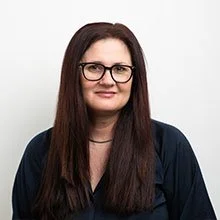Quick Chat: Dr. Codruta Ignea
By Emma Lindsay | November 22nd, 2024
Dr. Codruta Ignea is an Assistant Professor at McGill University in the Department of Bioengineering. She received her Bachelor of Science at King Michael I University of Life Sciences and her PhD in Protein Biotechnology at the University of Crete. Her research focuses on engineering simple organisms to create high-value compounds.
What inspired you to go into synthetic biology?
My background is in biotechnology. I figured out early on that I was interested in biology and chemistry, so I wanted a field where I could blend the two. I ended up specializing in microbial biotechnology during my undergraduate studies. Later, I pursued a master’s in natural products and biotechnology and went on to a PhD in protein biotechnology. By the time I finished my studies, synthetic biology was blooming. I started working in this field, combining it with my existing research in metabolic engineering.
Can you tell me about your research?
My research is focused on engineering microbial systems, specifically yeast, to produce bioactive compounds. I started by engineering the microbial chassis and various biosynthetic enzymes to yield different compounds of interest. I used a synthetic biology approach to engineer the biosynthetic pathway of carnosic acid, which is the main active compound in rosemary. From this we moved on to different compounds in the same family, using a similar synthetic biology approach. Our goal was to demonstrate how nature's existing biological parts can be recombined to create new biosynthetic pathways and systems that might not otherwise be possible. I was really successful with this research and managed to synthesize over 100 new-to-nature molecules. For instance, one of my recent successes involved producing terpene compounds with 11 carbon atoms, which is unusual. This was a significant breakthrough because 11-carbon compounds from this class of molecules are rare in nature. We’ve since gone even further, producing noncanonical compounds with up to 16 carbons that we’ve dubbed ‘Novoterpenes’.
What are the potential applications for these compounds?
Many of these compounds have biological activities, specifically in physiological defense or communication. The exciting thing is that we can apply these compounds beyond their original natural purposes. For example, carnosic acid, the compound I mentioned earlier, has strong antioxidant properties and is used in the food industry to prevent oxidation. Other compounds we’re developing have pharmaceutical potential. Take Taxol, for instance – it's a well-known anti-cancer drug that is actually a natural product. Some of these compounds are also being explored as food supplements, natural colorants, or biopesticides. The range of applications is quite broad. The new-to-nature molecules open some exciting possibilities for new applications, like developing unique drugs, creating innovative materials, or even using them in synthetic biology to build new pathways. There’s a lot of potential here, and I’m really excited to explore what we can do with these compounds!
Have you faced any challenges in engineering these pathways?
Absolutely, all the time. Challenges are part of the process, especially when working with bioactive compounds. Some of their biological activities are antibacterial or antifungal, and we often ask these microbes to produce compounds that are harmful to themselves. It’s pretty tricky. We are also working with yeast, which is quite robust and has an amazing adaptation system, so it finds ways to escape our engineering. Another challenge is the complexity of the pathways. It’s not as simple as combining a few enzymes and expecting everything to work perfectly. We have to deal with issues like enzyme regulation and system variability. Sometimes the activity of enzymes is suboptimal or different than expected, sometimes the organism produces the wrong compound. When engineering cells, there is high heterogeneity in these systems so you could have low-producing or high-producing colonies. With biopathways, you have successive steps where the product from one step becomes the substrate for the next, so conversion rates are very important, and you need large amounts of the early substrates to sustain extensive biosynthetic steps.
Are there any next steps in your research that you’re particularly excited about?
Yes! We’ve recently started collaborating on projects aimed at producing compounds that could help treat mental health conditions. I’m also excited about integrating artificial intelligence into synthetic biology. AI has the potential to help us navigate the enormous diversity of natural compounds much more efficiently. I believe AI will revolutionize not only synthetic biology but many other fields as well. It has the potential to accelerate research and open new doors that we haven’t even considered yet.
What advice would you give to young researchers or students interested in getting involved in synthetic biology?
This is my favourite question. I love working with students and I offered the first synthetic biology course at McGill. Synthetic biology is super exciting, and I can see that students love synthetic biology too. My advice would be to embrace interdisciplinarity. Synthetic biology is not a single discipline—it combines biology, chemistry, engineering, computer science, and more, and it’s evolving very quickly. Students should build skills in both wet lab and dry lab, as both are essential in this field. And finally, always consider the ethical implications of your work. It’s important to think critically about the impact our research will have on society.
Dr. Codruta Ignea’s Lab members at McGill University
Dr. Ignea’s work on engineering biosystems and producing high-value compounds has a wide range of applications, changing the face of pharmaceuticals and food science. She highlights the importance of learning interdisciplinary skills and utilizing tools to maximize the discovery of new-to-nature molecules.



